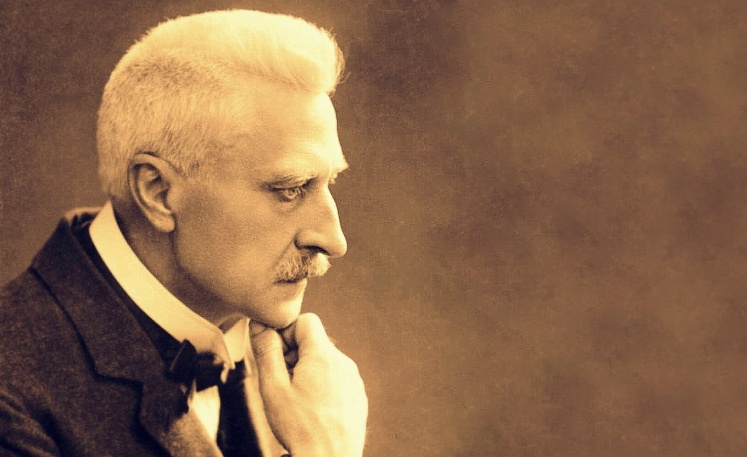 Key Person: Rudolph Otto (1869-1937)
Key Person: Rudolph Otto (1869-1937)
German theologian. His most famous work is The Idea of the Holy (1917) It defines the concept of the holy as that which is numinous. He coined this new term based on the Latin numen (deity).
In his book The Idea of the Holy Otto proposes and investigates the word numen which can then be extended to the numinous. He argues that experiences with the other (God) are numinous in nature and gives numerous examples where this may be so. He outlines a number of numinous responses that are possible:
Numinous dread/awe (Mysterium Tremendum)
This is the feeling of awe and recognition that there is a power beyond the physical world what is beyond our comprehension. It may become the hushed, trembling, and speechless humility of the creature in the presence of- whom or what? In the presence of that which is a mystery inexpressible and above all creatures (Otto, 1958: 13). CS Lewis has described the difference between this awe and normal fear: Suppose you were told there was a tiger in the next room: you would know that you were in danger and would probably feel fear. But if you were told ‘There is a ghost in the next room’, and believed it, you would feel, indeed, what is often called fear, but of a different kind. It would not be based on the knowledge of danger, for no one is primarily afraid of what a ghost may do to him, but of the mere fact that it is a ghost. It is ‘uncanny’ rather than dangerous, and the special kind of fear it excites may be called Dread. With the Uncanny one has reached the fringes of the Numinous. Now suppose that you were told simply ‘There is a mighty spirit in the room’, and believed it. Your feelings would then be even less like the mere fear of danger: but the disturbance would be profound. You would feel wonder and a certain shrinking–a sense of inadequacy to cope with such a visitant and of prostration before it–an emotion which might be expressed in Shakespeare’s words ‘Under it my genius is rebuked’*. This feeling may be described as awe, and the object which excites it as the Numinous. A modern example may be found (if we are not too proud to seek it there) in The Wind in the Willows where Rat and Mole approach Pan on the island: ‘”Rat,” he found breath to whisper, shaking, “Are you afraid?” “Afraid?” murmured the Rat, his eyes shining with unutterable love. “Afraid? of Him? O, never, never. And yet–and yet–O Mole, I am afraid.” (The Problem of Pain).
This then leads the person to a feeling of stupor, a “blank wonder, an astonishment that strikes us dumb, amazement absolute” (1958:26). Following on from this is the shudder: “The ‘shudder‘ reappears in a form ennobled beyond measure where the soul, held speechless, trembles inwardly to the farthest fibre of its being … it implies that the mysterious is beginning to loom before the mind, to touch the feelings.” (1958: 17).
Leading to what Otto calls” ‘creature-consciousness’ or creature-feeling. It is the emotion of a creature, submerged and overwhelmed by its own nothingness in contrast to that which is supreme above all creatures” (1958: 10). In recognising their own nothingness the person is then moved to acknowledge the power and majesty of the numinous. Otto develops this further to the person feeling unworthy and in a sense tainting the “holiness” by our presence. We thus need to “cover” ourselves to make ourselves able to approach the holy one (see 1958: 54). This would suggest that Christianity (and Judaism) have their roots in an encounter with the holy where people have gone through this process.
Numinous Fascination (mysterium fascinosum)
This links with the Mysterium Tremendum as Otto seeks to explain why with this feeling of dread people are attracted to the numinous. The numinous draws us to it with an irresistable force that is nearly irresistible. Otto calls this alluring quality the mysterium fascinosum. At its most intense, this fascination becomes “exuberant” and transforms into the mystical “moment” or direct, complete contact with the numen (see 1958: 36ff)
Are Religious Experiences Valid?
Having examined Otto and James’ definitions and characteristics of religious experience it is important to seek to answer the question as to whether religious experiences prove the existence of God. An argument that could be made based on James and Otto is the fact that religious experiences share many of the same characteristics then they must have some validity. Hick would argue that the differing emphases (and religions) are a result of our environment and culture but nevertheless “the universal presence of the Real… is transformed into inner or outer visions or voices” by our own psyches (2004: 169).